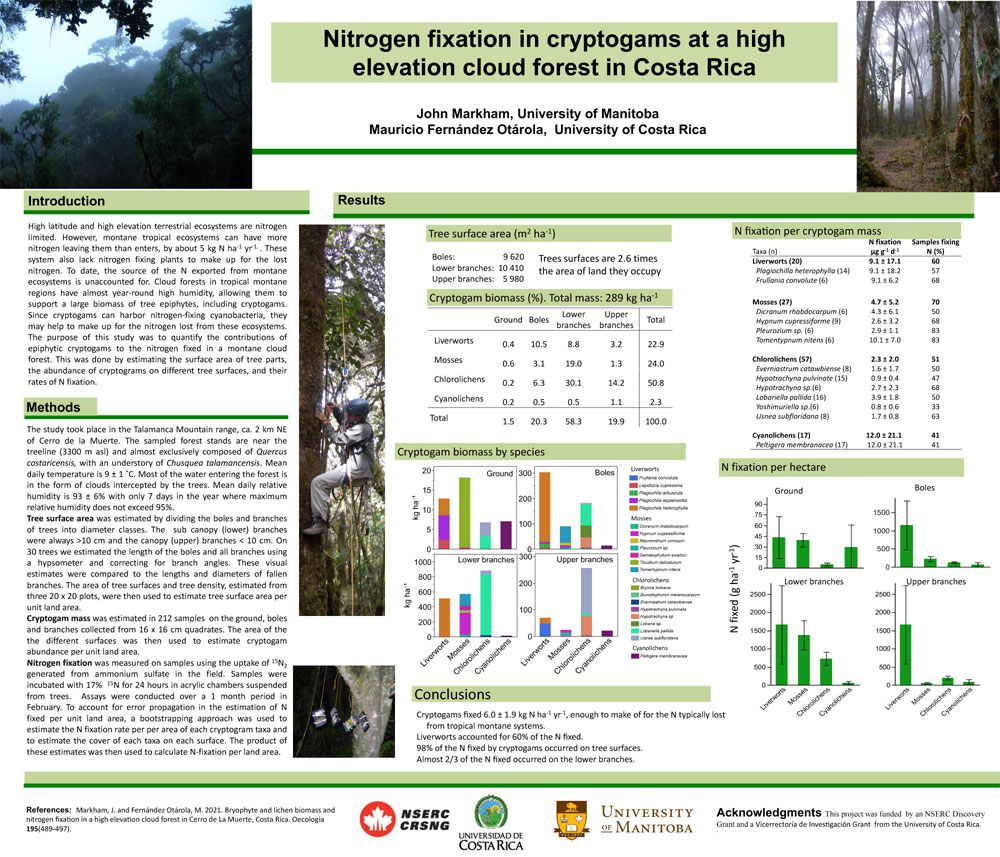
Montane tropical ecosystems can have more nitrogen leaving them than enters them by the about 5 kg N ha-1 yr-1. Cloud forests in tropical montane regions have almost year-round high humidity and consequently support a large biomass of tree epiphytes, including cryptogams. Since cryptogams can harbor nitrogen-fixing cyanobacteria, they may help make up for the nitrogen loss from these ecosystems. We quantified nitrogen fixation, using 15N2 uptake, in cryptograms in Quercus costaricensis stands near the tree line (ca. 3300 m asl) in the Cordillera de Talamanca, Costa Rica. Total cryptogam biomass was 2 977 kg ha-1, of which 67% was on lower tree branches, 20% on boles, 12% on upper branches, and 1% on the ground. Bryophytes, chlorolichens, and cyanolichens made up 53%, 44%, and 3%, respectively, of the biomass. Rates of N2 fixation per tissue mass were highly variable with cyanolichens fixing 12, liverworts 9, mosses 5, and chlorolichens 2, µg N g-1 d-1. When adjusted for abundance, the overall nitrogen input from fixation was 6.1 kg N ha-1 yr-1, of which 50% came from liverworts, 28% from mosses 18%, from chlorolichens, and 4% from cyanolichens. Only 2.0% of the nitrogen fixation occurred on the ground, whereas 67%, 24%, and 7% occurred on the lower branches, boles, and upper branches, respectively. These results show that tree epiphytes constitute the major source of N fixation associated with cryptogams and a significant nitrogen source for these forests, due to the trees' large surface area. N fixation by tree epiphytes can also make up for the nitrogen lost from these ecosystems.

